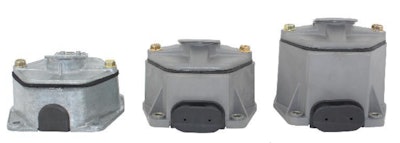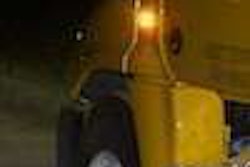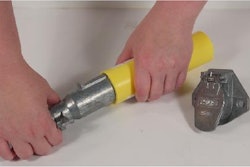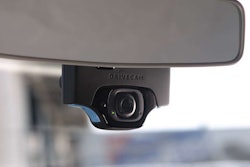The Philips company produces a monthly series (five years runnings) of tech tips related to truck and trailer lighting and electrical systems. Access the full archive of “Qwik Tech Tips” via this link.
Electrical system performance, downtime for socket replacement and corrosion prevention are all affected by the type of nosebox used, so it’s important to make the right choice for your trailer.
Space
First, determine how much space is needed for the wiring. A cramped nosebox can result in wearing or smashed wires, as well as wire puncture, which can cause a short. Insufficient space also makes it difficult to completely tighten the faceplate to the nosebox housing. A faulty seal then can allow for moisture to leak into the electrical system.
 Noseboxes come in a variety of depths to accommodate various wire quantities and sizes used for trailer electrical systems to help. Deeper and larger nosesboxes can be used to accommodate larger wire quantities and provide better accessibility for repairs.
Noseboxes come in a variety of depths to accommodate various wire quantities and sizes used for trailer electrical systems to help. Deeper and larger nosesboxes can be used to accommodate larger wire quantities and provide better accessibility for repairs.To further minimize repair downtime, choose a nosebox with a bulleted termination plug-in socket that doesn’t require rewiring of the harness to the back of the socket.
Moisture Protection
Decide what level of protection is needed to prevent moisture intrusion, a major cause of corrosion. The electrical system is most easily compromised at the 7-way connection. Standard metal noseboxes and sockets are susceptible to corrosion because the properties in metal are highly corrosive. Additionally, with metal sockets the plug insert is not completely sealed to the socket housing, allowing moisture and contaminants to enter in through the front of the socket, ultimately making way into the electrical system. Non-corrosive noseboxes and molded sockets that are completely sealed are virtually waterproof, protecting the internal wiring of the electrical harness system.
Circuit Protection
While it’s not absolutely required, incorporating circuit breakers into a nosebox can be an inexpensive way to help protect the entire electrical system. Circuit breakers keep electrical problems that arise in the trailer confined to the trailer, preventing popped circuits in the tractor. Confining an electrical problem to the trailer also mitigates any confusion when trying to identify a short within the entire electrical system.
Find additional features to consider in the latest Qwik Tech Tip edition or call a Phillips engineer at 888-959-0995.










